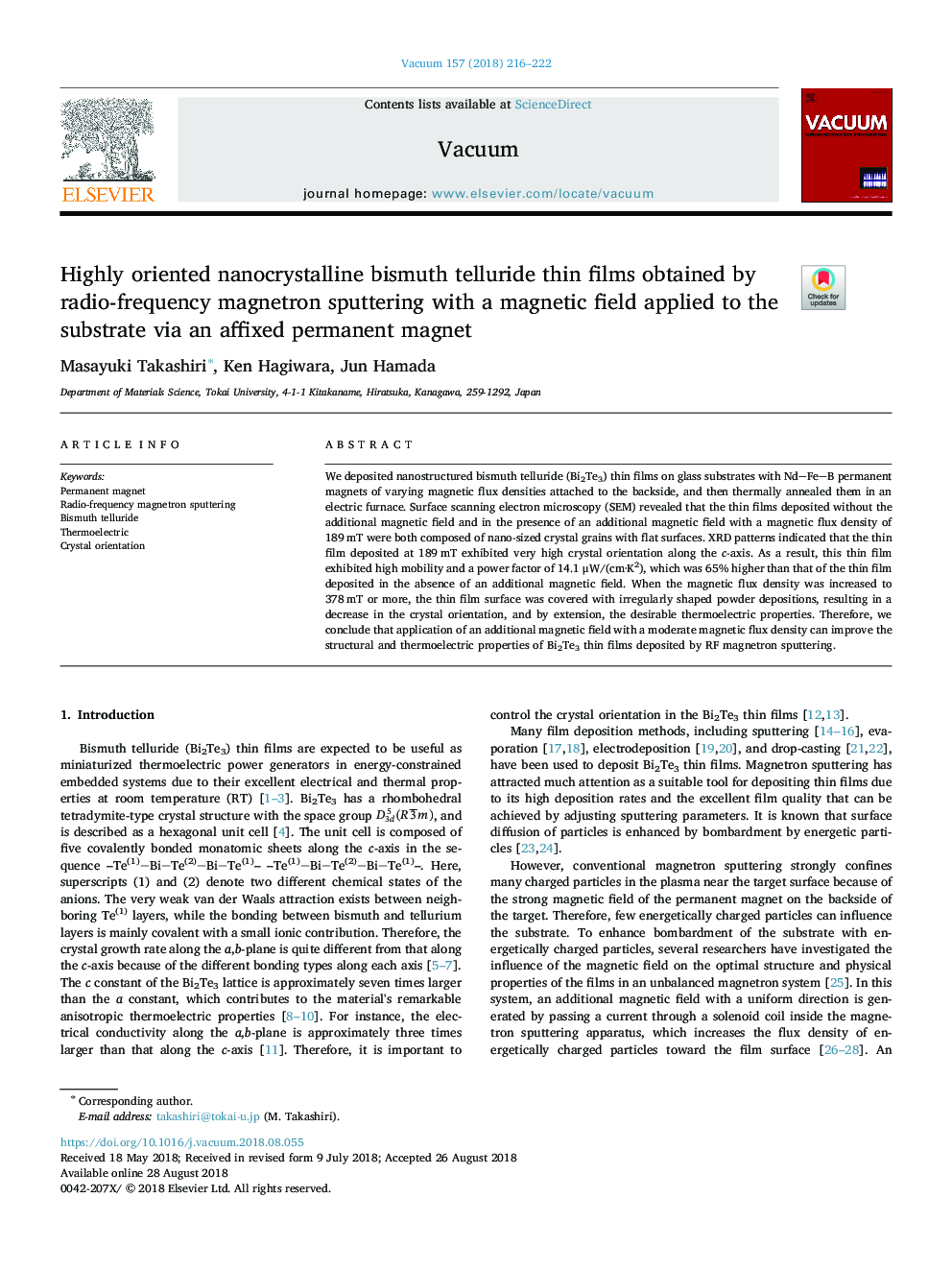| Article ID | Journal | Published Year | Pages | File Type |
|---|---|---|---|---|
| 10128801 | Vacuum | 2018 | 7 Pages |
Abstract
We deposited nanostructured bismuth telluride (Bi2Te3) thin films on glass substrates with NdFeB permanent magnets of varying magnetic flux densities attached to the backside, and then thermally annealed them in an electric furnace. Surface scanning electron microscopy (SEM) revealed that the thin films deposited without the additional magnetic field and in the presence of an additional magnetic field with a magnetic flux density of 189â¯mT were both composed of nano-sized crystal grains with flat surfaces. XRD patterns indicated that the thin film deposited at 189â¯mT exhibited very high crystal orientation along the c-axis. As a result, this thin film exhibited high mobility and a power factor of 14.1 μW/(cm·K2), which was 65% higher than that of the thin film deposited in the absence of an additional magnetic field. When the magnetic flux density was increased to 378â¯mT or more, the thin film surface was covered with irregularly shaped powder depositions, resulting in a decrease in the crystal orientation, and by extension, the desirable thermoelectric properties. Therefore, we conclude that application of an additional magnetic field with a moderate magnetic flux density can improve the structural and thermoelectric properties of Bi2Te3 thin films deposited by RF magnetron sputtering.
Keywords
Related Topics
Physical Sciences and Engineering
Materials Science
Surfaces, Coatings and Films
Authors
Masayuki Takashiri, Ken Hagiwara, Jun Hamada,
